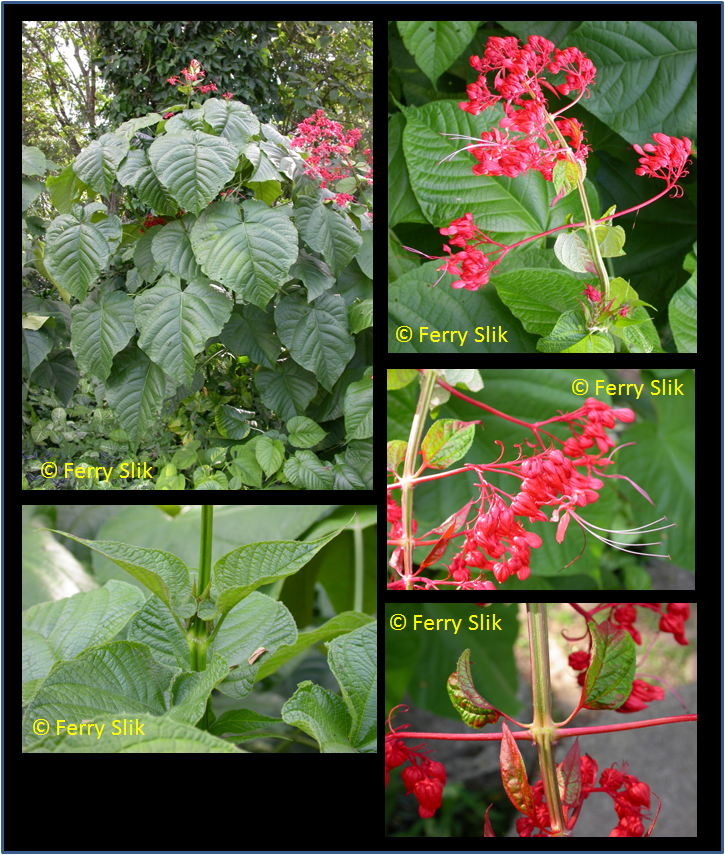Clerodendrum japonicum (Thunb.) Sweet, Hort. Brit. 822 (1826)
Latin for 'from Japan'.Synonyms
Clerodendrum coccineum D.Dietr.
Clerodendrum coccineum H.J.Lam
Clerodendrum darrisii H.L¨¦v.
Clerodendrum dentatum (Roxb.) Steud.
Clerodendrum esquirolii H.L¨¦v.
Clerodendrum illustre N.E.Br.
Clerodendrum imperialis Carri¨¨re
Clerodendrum japonicum (Jacq.) Gandhi [Illegitimate]
Clerodendrum japonicum var. album C.Pei
Clerodendrum japonicum forma album (C.Pei) Moldenke
Clerodendrum kaempferi (Jacq.) Siebold ex Hassk.
Clerodendrum kaempferi (Jacq.) Siebold
Clerodendrum kaempferi forma album (C.Pei) Moldenke
Clerodendrum kaempferi var. album (C.P'ei) Moldenke
Clerodendrum kaempferi forma salmoneum Moldenke
Clerodendrum leveillei Fedde ex H.L¨¦v.
Clerodendrum speciosum Teijsm. & Binn. ex Wigman [Illegitimate]
Clerodendrum squamatum Vahl
Volkameria coccinea (D.Dietr.) Schauer
Volkameria dentata Roxb.
Volkameria japonica Thunb.
Volkameria kaempferi Jacq.
Description
Shrubs 1-4 m tall. Branchlets 4-angled, pubescent to subglabrous, nodes sometimes villous. Petiole 0.5-15(-27) cm, densely yellow-brown pubescent;
leaf blade subcordate, 8-35 X 6-27 cm, sparsely pubescent, abaxially densely covered with numerous peltate glands often covered with a sand-colored
secretion, base cordate, margin sparsely serrulate to dentate, apex acuminate to acute. Inflorescences terminal thyrses, 15-34 X 13-35 cm; bracts and
bractlets usually reddish. Calyx red, 1-1.5 cm, deeply 5-lobed, pubescent, outside sandy glandular; lobes ovate-lanceolate to ovate, 0.7-1.3 cm.
Corolla white or red, tube 1.5-2.2 cm; lobes oblong, 1-1.5 cm. Stamens and style 3 X or more longer than corolla tube. Fruiting calyx much longer
than fruit, becoming reflexed. Drupes green when young, blue-black at maturity, subglobose, 7-10 mm in diam. [from Flora of China]
Ecology
Open, light rich places in thickets in valleys, along streams, in grassy openings; 100-1600 m. It requires moist soil.
Uses
Ornamental. Its roots and beautiful red flowers are used to treat arthritis, liver problems, eye dysfunction, hemorrhoids, hernia, and insomnia.
Distribution
Southern Himalaya's, India, Bangladesh, Southern China, Taiwan, Japan and Indo-China into Indonesia. Currently cultivated across the (sub-)tropics.
Local names
China: Cheng tong.
